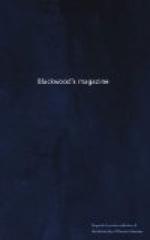As we marched along we found the whole country in commotion, the settlers all arming, and hastening to the distant place of rendezvous. We arrived at Trinity river one afternoon, and immediately sent messengers for forty miles in all directions to summon the inhabitants. At the period in question, the plantations in that part of the country were very few and far between, but nevertheless by the afternoon of the next day we had got together four-and-thirty men, mounted on mustangs, each equipped with rifle and bowie-knife, powder-horn and bullet-bag, and furnished with provisions for several days. With these we started for San Antonio de Bexar, a march of two hundred and fifty miles, through trackless prairies intersected with rivers and streams, which, although not quite so big as the Mississippi or Potomac, were yet deep and wide enough to have offered serious impediment to regular armies. But to Texian farmers and backwoodsmen, they were trifling obstacles. Those we could not wade through we swam over; and in due time, and without any incident worthy of note, reached the appointed place of rendezvous, which was on the river Salado, about fifteen miles from San Antonio, the principal city of the province. This latter place it was intended to attack—an enterprise of some boldness and risk, considering that the town was protected by a strong fort, amply provided with heavy artillery, and had a garrison of nearly three thousand men, commanded by officers who had, for the most part, distinguished themselves in the revolutionary wars against the Spaniards. Our whole army, which we found encamped on the Salado, under the command of General Austin, did not exceed eight hundred men.
The day after that on which Fanning and myself, with our four and thirty recruits, reached headquarters, a council of war was held, and it was resolved to advance as far as the mission of Santa Espada. The advanced guard was to push forward immediately; the main body would follow the next day. Fanning and myself were appointed to the command of the vanguard, in conjunction with Mr Wharton, a wealthy planter, who had brought a strong party of volunteers with him, and whose mature age and cool judgment, it was thought, would counterbalance any excess of youthful heat and impetuosity on our part. Selecting ninety-two men out of the eight hundred, who, to a man, volunteered to accompany us, we set out for the mission.
These missions are a sort of picket-houses or outposts of the Catholic church, and are found in great numbers in all the frontier provinces of Spanish America, especially in Texas, Santa Fe, and Cohahuila. They are usually of sufficient strength to afford their inmates security against any predatory party of Indians or other marauders, and are occupied by priests, who, while using their endeavours to spread the doctrines of the Church of Rome, act also as spies and agents of the Mexican government.




